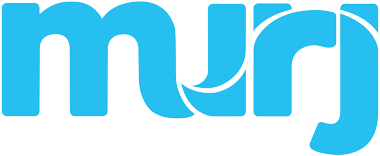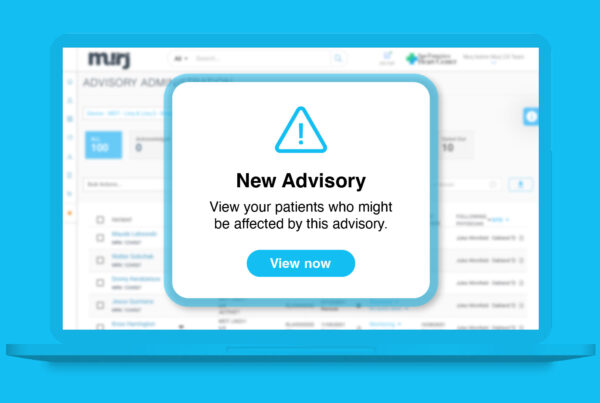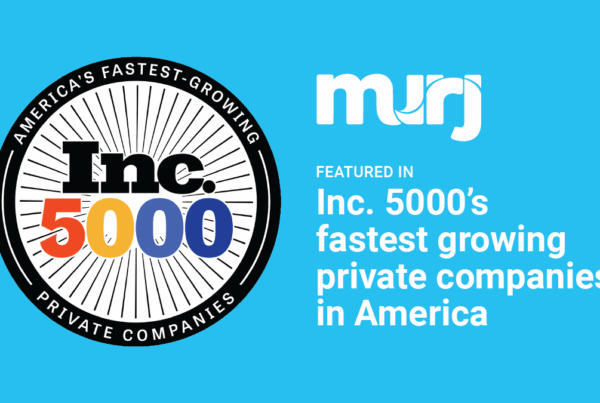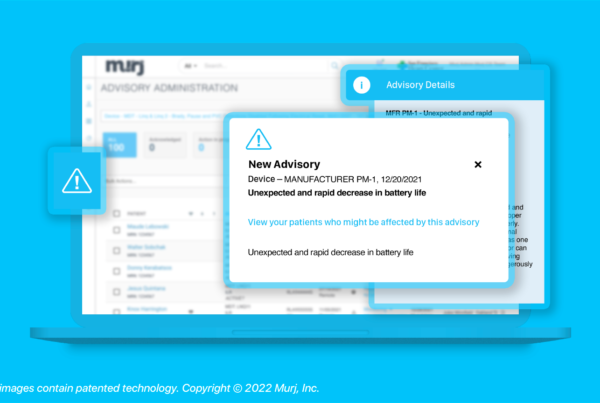A first-of-its-kind solution that provides heart failure (HF) and electrophysiology (EP) teams with the tools essential for maintaining independent cardiac implantable electronic device (CIED) care workflows
HF presents a significant and escalating challenge to public health in the US. Approximately 6.7 million people are affected by HF, with about 960,000 new HF cases reported annually. HF accounts for 33 percent of Medicare expenditures, with total direct medical costs of HF expected to reach $53 billion by 2030. As HF continues to impact the healthcare system at the macro level, individual clinics face mounting operational challenges that impact patient care and financial well-being. Frequent outpatient follow-ups and recurrent hospitalizations contribute to increasing clinic and patient costs, necessitating strategies to reduce these costs.
The challenge of HF management for patients with CIEDs
Many CIEDs offer remote monitoring of HF data that can aid in HF diagnostics and treatments. According to a recent Journal of the American College of Cardiology (JACC) scientific statement, “Remote monitoring coupled with a system of care that engages, informs, and empowers patients is essential for effective home management of HF to control symptoms, avoid hospitalization, and ameliorate the patient’s perception of illness.”
Through remote assessments, providers can detect physiologic changes indicative of worsening HF early and provide timely interventions, improving HF patient outcomes and preventing costly hospital readmissions and related Medicare fines. Moreover, remote monitoring can reduce time-consuming and costly in-person visits to the clinic.
While HF CIED remote monitoring can offer substantial benefits, the data burden can overwhelm care providers. The HF standard of care indicates at least one remote transmission every 31 days. This care volume exceeds the standard of care for EP rhythm management, which entails a 91-day monitoring interval with an average of two transmissions per period. For a 5,000-patient CIED clinic opting ICD and CRT-D patients into HF monitoring, the cumulative annual burden can exceed 70,000 HF and EP remote transmissions. The significant task of managing these transmissions is compounded by the difficulty in isolating those transmissions intended for the HF care team versus the EP care team. Additionally, when billing the same patient population for HF and EP care, accurate documentation is complicated. It is essential to distinguish the date, time, and care type for the services delivered. Poor documentation and inaccurate interval tracking can lead to reimbursement denials.
These challenges have resulted in suboptimal HF patient care and reimbursement, ultimately hindering both clinical outcomes and financial incentives. Publicly available reimbursement data suggests that the current care achievement in the US among HF-capable CIED device patients is less than 15 percent of the recommended standard of care.
Bringing proven CIED workflow success to HF care
Help is here. The Murj CIED platform, with more than 17 million transmissions processed, has proven to increase care compliance by 2-3x while dramatically improving staff productivity. CIED clinics running on Murj govern more than 750,000 device patients. A Murj-empowered clinic can manage 2,000 remote patients with a single technician. With the introduction of the Murj Dedicated Heart Failure Platform, Murj is bringing similar gains to HF providers, staff, and patients.
Heart failure management is known to improve outcomes, but we need software to manage the data workflow.
Jude Hebert, RN, BSN, MBA, VP, Clinical Programs, Cardiovascular Logistics
What is the Murj Dedicated Heart Failure Platform?
The Murj Dedicated Heart Failure Platform provides a digital workflow for remote HF transmissions in a user interface designed to meet the unique needs of the HF specialist. Murj enables high-efficiency HF remote workflow and interval tracking that is customizable at the patient level. With Murj, HF and EP teams can monitor cardiac device patients in parallel. This allows dedicated EP and HF teams to administer their relevant care modalities without conflict, confusion, or reimbursement denial, all while facilitating effective CIED patient co-management.
After establishing an automated HF workflow in Murj, scheduling and billing truly become ‘set it and forget it.’ You transition into a more focused clinical mindset of understanding what needs prioritization, the patient’s care plan, and how HF monitoring can enhance the patient’s treatment for better outcomes.
Jacqueline Arrasmith, RN, Remote Cardiac Device Specialist, Bon Secours Mercy Health
Murj’s Dedicated Heart Failure Platform automates the identification and assignment of HF transmissions. When HF transmissions occur, Murj categorizes and directs them to the HF clinical team, reducing the administrative burden of determining an HF transmission compared to an EP transmission, and freeing providers to spend more time on patient care.
So basically every single day, we’d give [EP providers] a list and they print out all these reports and then we’d match them up to each patient as they came in… I mean, talk about very inefficient… We’d have reams and reams of paper being printed every day. So when we had this opportunity to integrate and do everything with Murj, it offered us a whole new world.
Tracey Ater, Practice Manager, Allegheny Health Network
How does the Murj Dedicated Heart Failure Platform facilitate patient care across both HF and EP teams?
Murj ensures that, for every patient, clinically relevant transmission data is accessible to both HF and EP care teams and is filtered to the needs of each specialty. This sharing of essential and filtering of non-essential data reduces overload and drives improvements in clinical efficiency.
Once data is made available to relevant clinical teams, Murj tracks care intervals to improve reimbursement capture for the work performed. With 2-Click Clear, providers can process normal device checks quickly. Murj EHR Integration enables HF providers to instantly view active medication lists for all patients.
By providing care teams with easy access to essential HF clinical data, the Murj Dedicated Heart Failure Platform optimizes the allocation of resources and enhances coordination between providers.
How does the Murj Dedicated Heart Failure solve billing documentation and reimbursement challenges?
Under CMS guidelines, each HF patient can have up to 11 remote care intervals annually, with each interval qualifying for reimbursement. This translates to a potential annual reimbursement opportunity of $500-650 per patient. As noted above, billing challenges in remote HF management of CIED patients can lead to suboptimal reimbursement capture, making it difficult for clinics to economically deliver HF care to their patients.
These challenges stem chiefly from the inability to distinguish among different prescribed care intervals for CIED patients in both EP and HF care modalities, as well as the difficulty in allocating credit to the appropriate clinical EP and HF teams for work completed.
The Murj Dedicated Heat Failure Platform eliminates these challenges. For HF-ready CIED devices, Murj identifies care modality transmissions received and tracks the associated work completed. For a co-managed transmission, Murj deciphers and enables billing for each unique care interval, tracks the dates of service (DOS), and applies appropriate billing codes relevant to both EP and HF care. This approach prevents billing overlap, reduces errors, and maintains an organized workflow.
Murj presents the HF transmission data quickly in an uncomplicated format that’s easy to view and interact with. Automated HF billing saves time so that we can focus on the patients who need care. Murj is going to enable us to achieve our goals as we branch out to provide HF monitoring to other clinics in our system.
Stephanie Ledbetter, RN, Program Coordinator, Heart Failure Devices, Allegheny Health Network
The Murj Dedicated Heart Failure Platform is available now
Want to learn more? Get in touch with us today.
